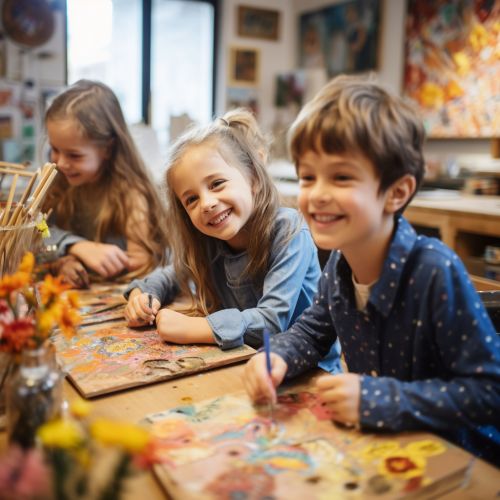Art and Cognition
Overview
Art and cognition is a field of study that examines the relationship between the processes of the mind and the creation, understanding, and appreciation of art. This field is a sub-discipline of both art theory and cognitive science, and it draws on methods from both of these larger fields to answer questions about the nature of art, the nature of human thought, and the connections between the two.


Cognitive Processes in Art Creation
The creation of art involves a wide range of cognitive processes, including perception, memory, emotion, and critical thinking.
Perception
Perception is the process by which we interpret sensory information. In the context of art, this can involve the perception of visual elements such as color, shape, and form, as well as auditory elements in the case of music, or tactile elements in the case of sculpture. The artist's perception of the world and their ability to translate this perception into a work of art is a fundamental aspect of art creation.
Memory
Memory plays a crucial role in art creation. Artists draw on their memories of people, places, and experiences as a source of inspiration. In addition, the process of creating art often involves a kind of muscle memory, as artists become skilled at using certain tools and techniques through repeated practice.
Emotion
Emotion is another key cognitive process involved in art creation. Many artists use their work as a means of expressing their emotions, and the ability to evoke emotion in the viewer is often seen as a mark of a successful work of art.
Critical Thinking
Critical thinking is the ability to analyze information and make decisions based on that analysis. In the context of art, this can involve making decisions about what elements to include or exclude, what techniques to use, and what message or emotion to convey.
Cognitive Processes in Art Appreciation
Just as cognitive processes play a key role in the creation of art, they are also crucial for the appreciation and understanding of art.
Perception
When viewing a work of art, the viewer's perception of the piece is influenced by a variety of factors, including their past experiences, their knowledge of art, and their personal tastes. This perception is not static, but can change over time as the viewer learns more about the piece and its context.
Memory
Memory also plays a role in art appreciation. When viewing a work of art, viewers often draw on their memories of other works of art, as well as their general knowledge and experiences, to interpret and appreciate the piece.
Emotion
Emotion is a key component of the art appreciation process. Art can evoke a wide range of emotions in viewers, from joy to sadness, from awe to anger. These emotional responses can greatly enhance the viewer's appreciation of the work.
Critical Thinking
Critical thinking is also important for art appreciation. Viewers use critical thinking to analyze the work and its elements, to interpret its meaning, and to evaluate its quality.
The Role of Art in Cognitive Development
Art can play a significant role in cognitive development. Engagement with art, whether through creation or appreciation, can help to develop a range of cognitive skills, including perception, memory, emotion regulation, and critical thinking.


The Intersection of Art and Cognitive Science
The field of art and cognition is situated at the intersection of art theory and cognitive science. Researchers in this field use methods from both disciplines to explore questions about the nature of art and the nature of cognition.
